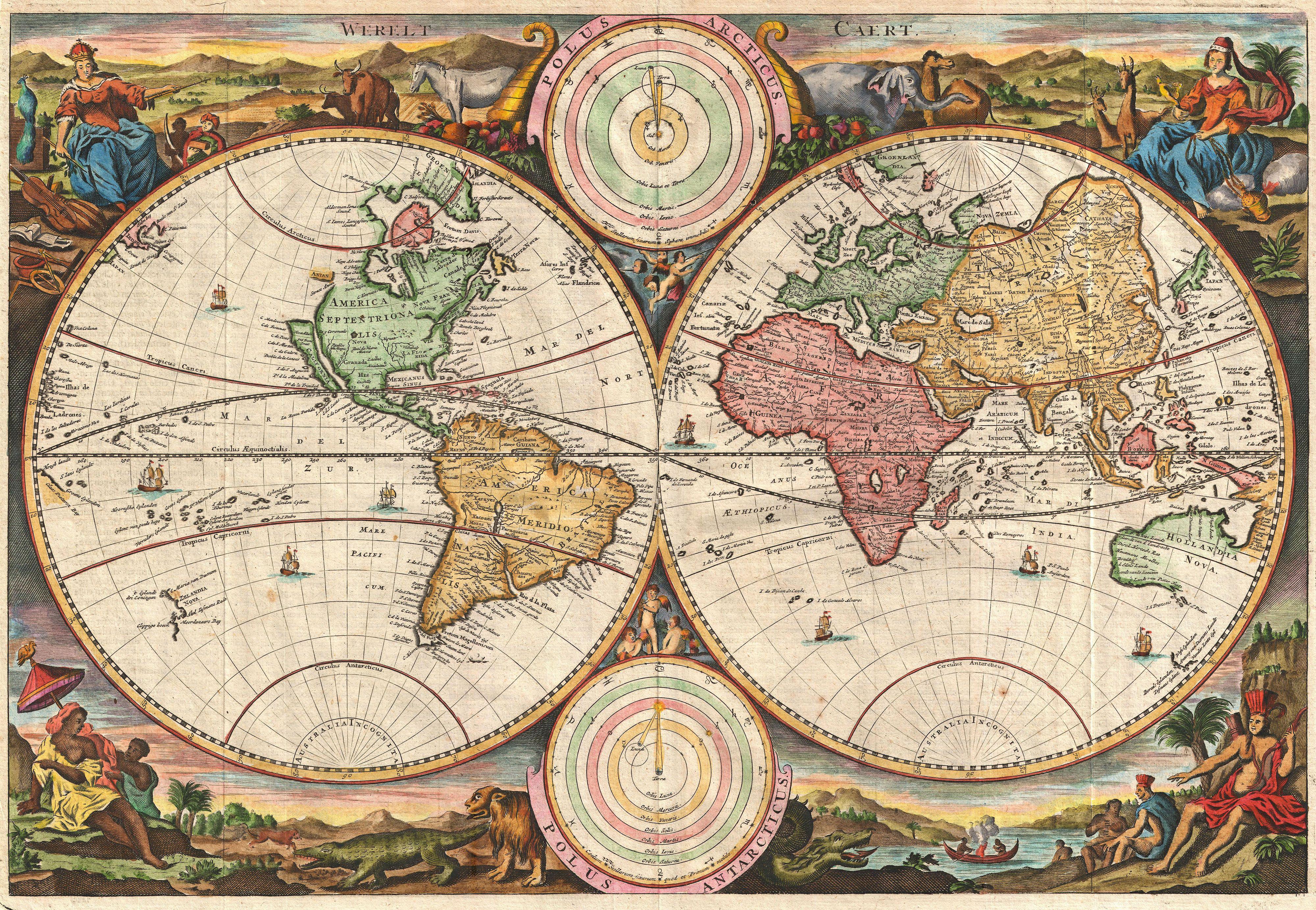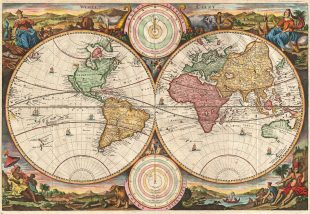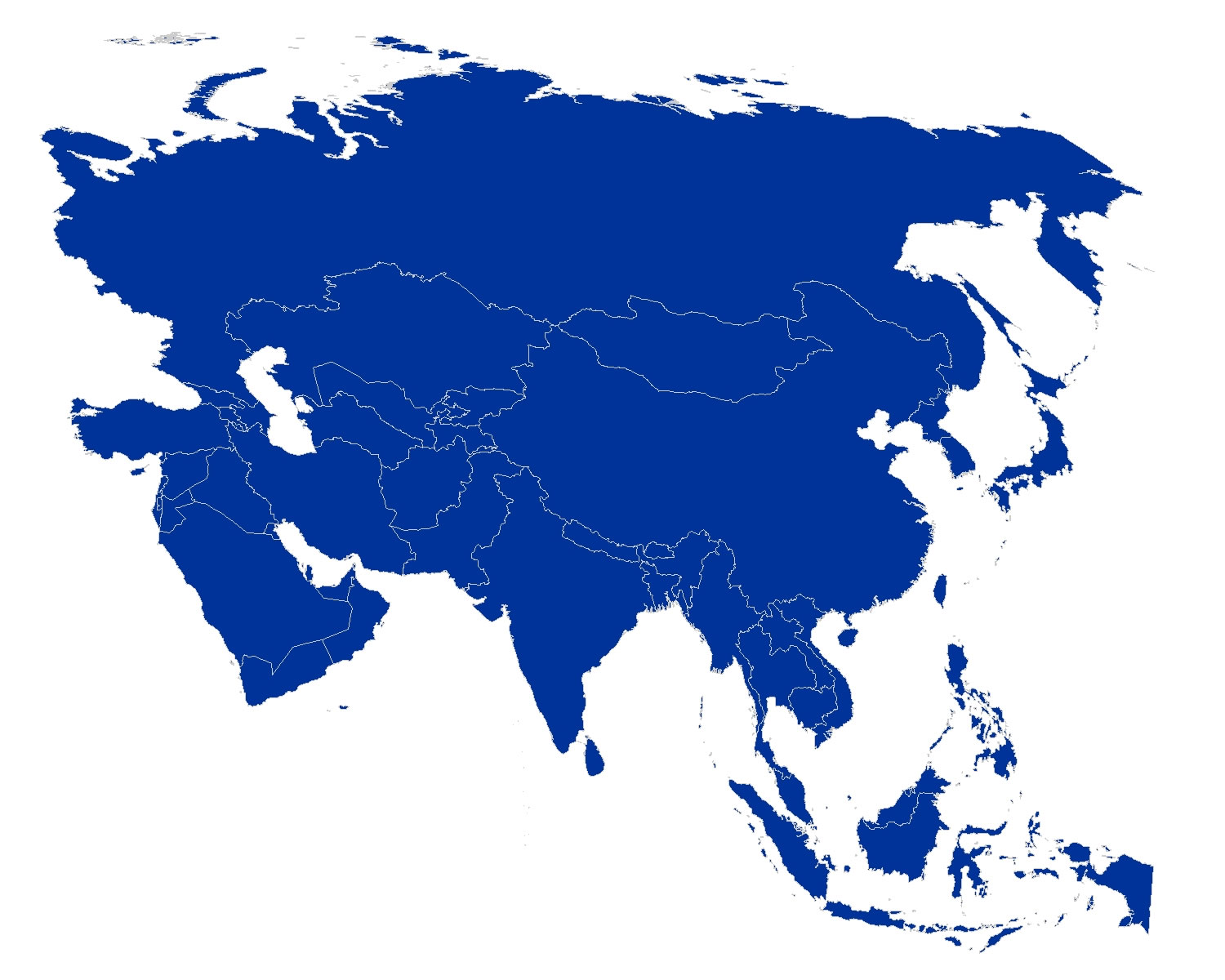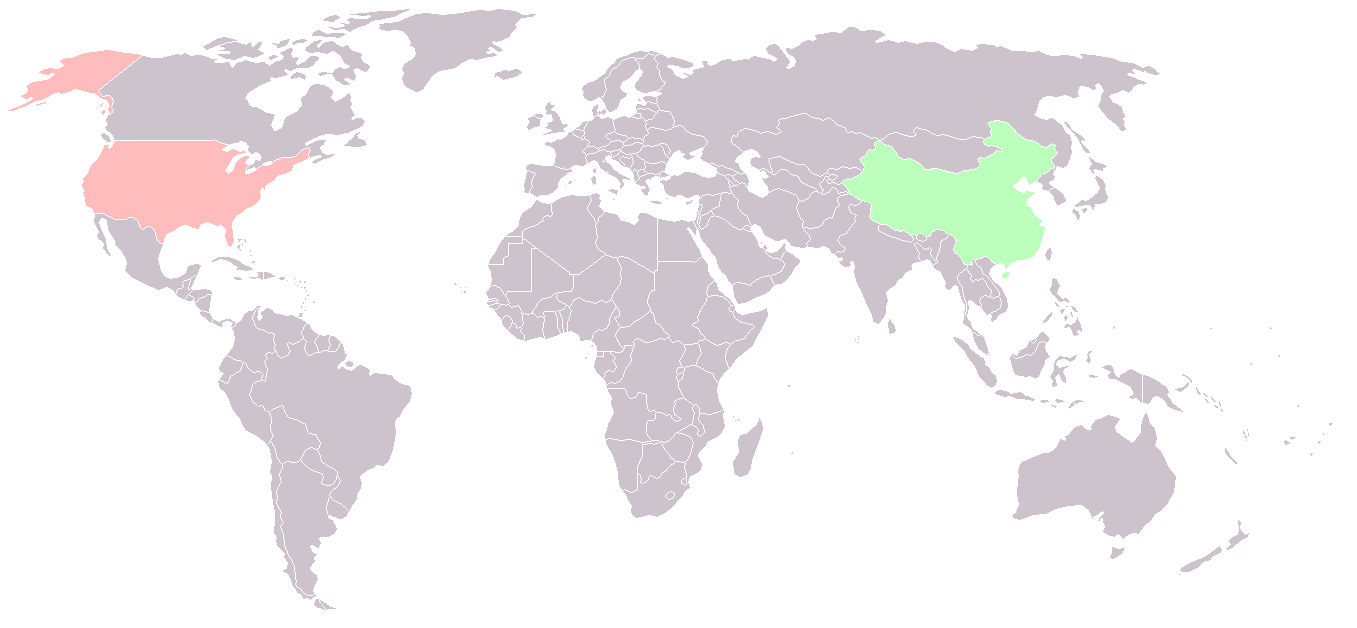
Asia and Europe in a New Era of Great-Power Rivalry
In the post-Cold War era, economic growth, multilateralism and increased connectivity have marginalized the security agenda in both Asia and Europe. In 1994, Singapore Prime Minister Goh Chok Tong launched the idea of an Asia-Europe Meeting as a platform for dialogue between Asia and Europe, and it was only fitting that the “New Comprehensive Asia-Europe Partnership for Greater Growth” was chosen as the theme of the first Asia-Europe Summit Meeting (ASEM) in 1996. More than two decades later, although economic co-operation still constitutes the backbone of Asia-Europe relations, China’s rise and Russia’s new assertiveness have brought great-power politics back to the top of the agenda. In this new era, the strategic theaters of Asia and Europe are once again closely linked to each other on the grand chessboard of international affairs.
Europe and Asia shaping developments in each other’s regions is, of course, not a new phenomenon. European imperialism had a deep impact on Asian history, and the legacy of the Opium Wars is still evident in China’s current world outlook. The Anglo-Japanese Alliance of 1902 influenced the outcome of the Russo-Japanese war, and later opened the way for Japan’s takeover of German concessions in China at the 1919 Versailles Peace Conference following the First World War. The European powers supported the transfer of the concession to Japan and the bitter disappointment in China over this decision inspired one of the most important intellectual turning points in modern Chinese history — the May Fourth Movement. The Korean War cemented the Cold War as a global phenomenon and led to increased tension and military spending in both Asia and Europe. Moreover, Mao Zedong’s decision in the early 1970s to lean towards the United States forced the Soviet Union to develop a costly deterrence strategy on both its European and Asian flanks simultaneously. With the recent re-emergence of realpolitik in international affairs, the security landscapes of Asia and Europe are again closely connected. I will here present how this new strategic connectivity works along eight different but interlinked dimensions.
1: Global power shift and the US two-flanks policy
China’s rise changes the balance of power in the international system, and how great powers relate to each other. We are increasingly entering a world system where the US and China stand above all other countries in terms of economic and military power. Although Europe and Russia play second fiddle in this new system, the Asian and European flanks of the Eurasian continent — in other words, the two flanks of the US — are increasingly interconnected as strategic theaters.
As a response to a more powerful and emboldened China, the administration of US President Barack Obama in 2011 announced its “rebalance” to Asia. This not only caused alarm in Beijing, but also in European capitals, where leaders voiced their concerns about the US commitment to the security of Europe and the future of transatlantic relations. Europe’s concerns increased further after Russia’s move into Crimea and eastern Ukraine in 2014. Responding to Russian assertiveness, the US is now moving back into Europe, and NATO’s military presence has been enhanced in the eastern part of the alliance. The latter development has caused concern in Japan. The main worry in Tokyo is that if the deterioration of the strategic environment in Europe continues, the foundation of America’s “pivot to Asia” could be undermined.
Nevertheless, seen from Washington, it is China, not Russia, that has the potential to challenge the US position as hegemon. Although the US will not leave Europe to the Russian threat, a strong US forward presence seems more needed in Asia than in Europe. In fact, the new Indo-Pacific strategy launched by the administration of President Donald Trump indicates that the US is prepared to move even deeper into Asia.
2: The maritime theater
China’s commitment to add sea power to its traditional position as a land power, is one of the most important structural shifts in international politics. With China now increasingly able to challenge US command of the sea in the Asia-Pacific, we are witnessing the largest challenge yet to the established order in the region. The changing maritime picture in Asia challenges Europe in two ways.
First, as the world’s largest trading bloc with huge economic interests in Asia, Europe is concerned about the future order at sea and the protection of its global supply chain. With the emerging great power rivalry taking place in the maritime domain, order at sea might be more contested. In 2014, the EU adopted a Global Maritime Security Strategy, calling for full respect of the freedoms of the high seas, freedom of navigation, the right of innocent passage in territorial seas and the right of transit passage through straits, as reflected in the United Nations Convention on the Law of the Sea (UNCLOS).
Second, just as the US is moving naval assets to the Asia-Pacific, we see a revival of Russian naval activity for the first time since the Soviet era, particularly in North Atlantic waters, posing new challenges for NATO’s maritime forces.
3: The Sino-Russian embrace
The Sino-Russian partnership has expanded considerably over the last few years and is now arguably stronger than it has ever been. Russia has moved closer to China, a turn in Russian policy that China has embraced. Russia strengthened its economic relations with China during the global financial crisis, followed by a strategic pivot to China as a result of Moscow’s annexation of the Crimea and the resulting Western sanctions. The growing power gap between them makes China the senior partner in the relationship. Moreover, the US continues to be a common denominator. In fact, Russia’s relationship with the US is currently at its lowest point since the end of the Cold War, and China’s strategic rivalry with the US has intensified.
The possibility of China and Russia entering into a formal military alliance is relatively small, but their strengthened relationship has implications for security in Asia and Europe. China supports Russia to alleviate the impact of Western economic sanctions following the crisis in Ukraine, and they are now able to add leverage to each other’s energy diplomacy. Above all, by developing a cordial relationship, they both keep their strategic rear safe. This enables Moscow to deploy most of its armed forces on the European front facing NATO, and Beijing to give priority to its most pressing security challenge, confronting the US in the Asian maritime domain.
4: Diverging threat perceptions across the Atlantic
During the Cold War, Europe and the US shared the same threat perception, in the form of the Soviet Union. Since the end of the Cold War, and in particular over the last few years, we have seen a diverging threat perception across the Atlantic. Although the latest National Security Strategy of the United States, issued in December 2017, identifies both China and Russia as challenges, China is perceived as a larger challenge than Russia. Seen from Europe, however, Russia is the main challenge. The mainstream thinking in Europe is that China does not pose a direct threat to European security, and that China offers European countries a wide range of opportunities in terms of economic co-operation. Europe and the US both have three legs in their Asia strategy — economic co-operation, diplomatic engagement and security — but Europe’s security leg is at best very soft. Europe’s policy on Russia is largely determined by Moscow’s military posture, but its approach to China is mainly driven by Beijing’s agenda on global governance and the international order. This divergence of views presents the transatlantic relationship with a number of challenges.
Europe and the US might disagree on a number of issues related to China. One recent example was the US effort to convince European nations to boycott the Chinese-led Asian Infrastructure Investment Bank (AIIB), an effort that did not get any resonance in Europe. Moscow and/or Beijing could try to exploit such disagreements to divide the West.
The perception of China as being a security threat could, of course, also take hold in Europe. If so, should Europe and the US agree on a new type of transatlantic division of labor, with Europe being mainly responsible for deterring Russia, enabling the US to focus its resources on China and the larger Indo-Pacific Theater, or should Europe pivot to Asia along with the US? A European security pivot to Asia could potentially take three forms: a more strategic use of arms sales; an increase in capacity-building and co-operation on non-traditional security; or military deployments.
5: A European military contribution in Asia
Asian security is gradually moving up the ladder of attention in European capitals. The EU now adheres to the ASEAN Treaty of Amity and Co-operation; has joined the ASEAN Regional Forum (in 2012) and the Council for Security Co-operation in the Asia Pacific (2013); and signed a crisis management co-operation agreement with South Korea (2014). NATO has a close dialogue with Australia, New Zealand and South Korea, as well as with Tokyo. In addition, amid the tense situation on the Korean Peninsula in 2017, a discussion started within NATO on whether North Korean aggression could trigger an Article 5 situation, which involves provisions for collective defense.
At the bilateral level, both France and the UK have recently established regular 2+2 meetings (foreign and defense ministers) with Japan. At the annual Shangri-La dialogue in Singapore in 2016, the French minister of defense argued that France is ready to support naval vessels in freedom of navigation operations in the South China Sea, while the British foreign minister recently stated the UK’s intention to be “back east of Suez.”
The growing power asymmetry in the region and Beijing’s more assertive maritime policies have not only resulted in increased attention from Europe, but also a demand signal from China’s neighbors. This demand signal is, of course, without comparison much stronger towards the US, but in its first National Security Strategy in 2013, Japan identified enhanced security co-operation with Europe through the EU, NATO and the Organization for Security and Co-operation in Europe (OSCE) as one important initiative.
Nevertheless, it appears unlikely that European countries would be willing, or even able, to commit substantial troops or weapons platforms to a conflict in the region. Asia is mainly a maritime theater, and as Ian Bowers elaborates on page 102, European navies are currently a mere shadow of their glorious past. Moreover, it remains an open question whether a military engagement in Asia from European countries would contribute to crisis management, or if it would be counterproductive and escalatory. Furthermore, deploying to Asia, Europe also risks weakening its deterrence capabilities toward Russia.
6: A European non-traditional security engagement
Europe has for years been involved in non-traditional security co-operation in Asia, and this effort could be further upgraded, either as an alternative or as a supplement to a hard security engagement in the region. Europe could contribute with confidence-building or arms control on the Korean Peninsula, fighting piracy through its participation in the Regional Co-operation Agreement on Combating Piracy and Armed Robbery against Ships in Asia (ReCAAP), share experience in risk management and dispute settlement mechanisms, or engage in capacity building. European countries need to consider if they want to facilitate confidence-building between the rising power China and its neighbors, or give priority to supporting the smaller countries in the region with the aim of increasing stability and offsetting their power asymmetry with China. In 2011, Japan launched its security-related capacity-building assistance program. One of its aims is to help Southeast Asian nations to improve their security capabilities to deal with coercive actions in the maritime domain, and Tokyo is encouraging European countries to explore further co-ordination in this effort. This view seems to be shared by the EU, reflected in its 2014 Global Maritime Security Strategy, highlighting the deepened maritime security tensions across the Indian and Pacific Oceans, and in an EU-ASEAN joint communique from 2016 that acknowledged “the importance of a strong, cohesive and self-confident ASEAN for stability in the Asia-Pacific region.”
7: European arms exports to Asia
Asia’s growing defense budgets have turned it into a lucrative arms market, including for European producers of arms and defense-related technologies. Although the volume of European arms sales to Asia is not in the same league as Russia or the US, its arms and technology exports still make a significant contribution to military modernization programs in the region. Nevertheless, European arms exports to Asia are to a large degree driven by commercial interests and less so by security policy or strategic concerns.
Europe could make a stronger impact on Asian security if it were able to co-ordinate its armaments companies into a more coherent approach, working along specific policies linked to its overall strategy in the region. For instance, as a result of the growing power gap in the region in China’s favor, most Asian states are acquiring asymmetric capabilities, and Europe could make a decision to channel its arms exports, related technology and dual-use exports to specific countries to support these efforts. Moreover, despite the EU arms embargo on Beijing, European countries continue to transfer arms-related technology and dual-use items to China, and if it wanted to, Brussels could enforce even stricter export regulations. The EU could also consider closer co-ordination with the US in selling arms and technologies to Asia. However, it seems unlikely that European countries and their arms producers would be able to agree on an overarching arms export policy to Asia, at least in the near future, and Europe also has to take into consideration its overall relationship with China.
8: The Arctic connection
The opening of Arctic sea routes will increase connectivity between Asia and Europe. Nonetheless, both the commercial opportunities and security challenges attached to the Arctic are often exaggerated. The Northern Sea Route has been written into China’s Belt and Road Initiative, signaling an interest on the Chinese side, but it will take many years, if not decades, before this sea route is commercially sustainable. Also, it is only shipments in and out of ports in Japan, South Korea and cities north of Shanghai in China that will save fuel and time sailing the Arctic route instead of through the Suez to Europe.
Furthermore, China’s and Asia’s entry into Arctic affairs is unlikely to alter the security policy configuration in the region. For the PLA Navy to operate in the Arctic Ocean, it first has to sail along the Japanese coast, pass through the narrow Bering Strait, then enter into Russian waters. An increased Chinese footprint in the Arctic is hardly feasible without Russian consent, and despite improved ties, China’s Arctic engagement is still looked upon with suspicion in Moscow, a concern Beijing is keenly aware of. Moreover, in the big picture of Chinese foreign policy, the Arctic is rather low on the list of Beijing’s priorities.
Conclusion
In a changing geopolitical landscape characterized by intensified Sino-US rivalry and Russian assertiveness, the strategic theaters of Asia and Europe are now more closely connected than at any point since the end of the Cold War, and this has to be reflected in the grand strategy of the major powers. Although the Asian theater has replaced the European as the new nexus in international politics, Europe can still play a role in Asian security. As of yet, however, European capitals don’t have an overarching strategy for their security engagement in Asia. Europe has to grapple with important questions related to how to weigh hard and soft security in its approach to the region — if it should exclusively support the smaller nations in the region to strengthen their position toward China, or if it should play the role of mediator. Moreover, if the Sino-US rivalry further intensifies and Washington decides to pursue a containment strategy against China, how should Europe position itself? Would Europe be best served by a grand strategic transatlantic division of labor, or by pivoting to Asia with the US? If Europe should choose the latter, it has to acknowledge that European armed forces and their navies, in particular, will have a modest impact.
By Jo Inge Bekkevold, Senior Adviser at the Norwegian Institute for Defence Studies and former Norwegian Foreign Service diplomat with several postings to Asia. He is the editor with Robert S. Ross of China in the Era of Xi Jinping: Domestic and Foreign Policy Challenges (2016), and with Bobo Lo of Sino-Russian Relations in the 21st Century (forthcoming).
(Global Asia)








